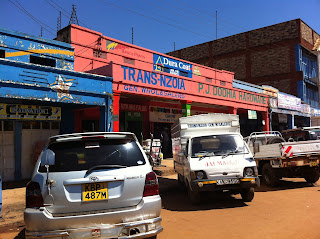Quality and consistency increases with each panel made.
Variables, even ever so slight ones, such as humidity, temperature, exact
measurements of liquids, can make some differences in the finished product. Our
efforts therefore, as stated in QIP 101 (Quality Improvement Process), are to
minimize the variations. This work will pay off when we start assembling the
panels into the house.
Reminder (managing expectations) no mansion going up here,
8½ ft x 12½ ft house for 2. Poverty housing, Refugee Camps, and IDP camps
(Internally Displaced Peoples) are the focus at this point. Yes, concept may be
applied to other construction of all types, but one step at a time, based on
most urgent need.
Our site is the Gilgal School and Ephraim Orphans Home in
Kitale. High School students attend classes in the compound, whereas the little
children and middle schoolers go to classes just a short walk away, returning
for lunch, and then of course for dinner and overnight.
During class breaks, the HS students always come join us to
check on progress and discuss the process. They are very interested in the
developments and have great questions. It’s Chemistry, Physics, Design, and
Math, one of them pointed out – never thought of it that way …
Forming structural wood into the panels to support the door
and windows after house assembly.
Panel inventory increasing … need 12 to build a small house.
Weight (in any form; full cans, boulders, and students)
added to top of form for first 5 – 6 minutes of expansion, as Foam will
literally lift the lid off the base.
Form has been used for 11 panels thus far and is still in
good shape. This is significant for future planning of mass production.


















































